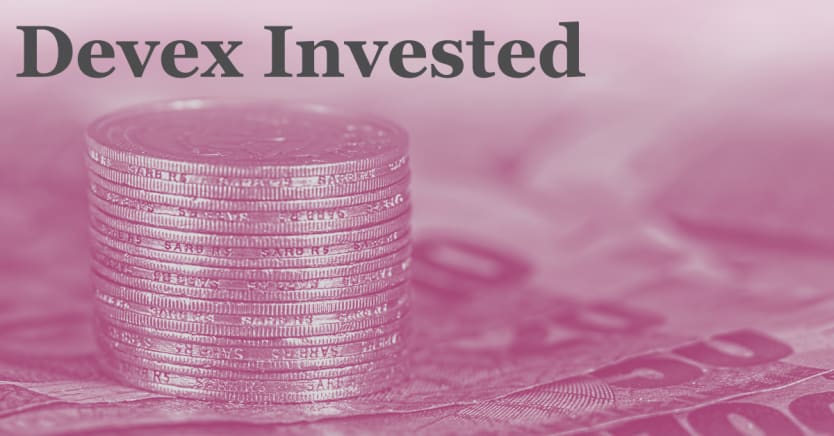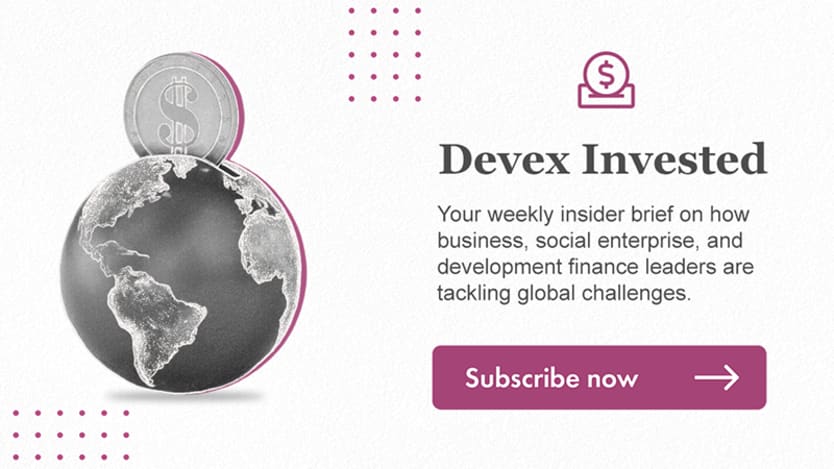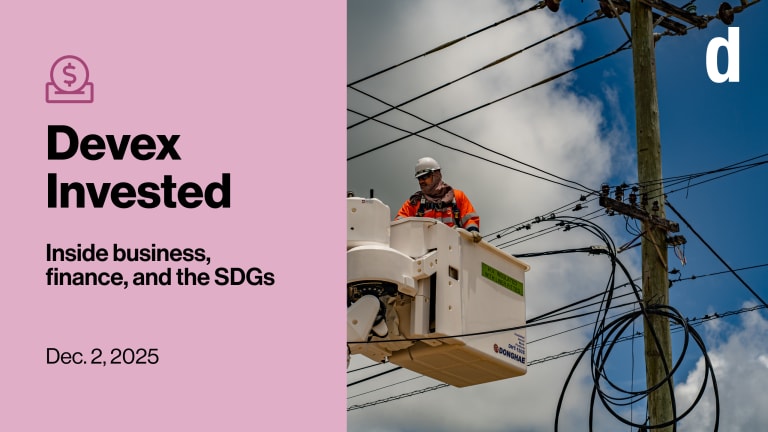
Now that IMF has allocated $650 billion in Special Drawing Rights to member countries, the burning question concerns reallocation.
Economists are trying to figure out the best and most politically feasible way to move the assets from wealthy nations that need them the least to the low-income countries struggling the most amid the COVID-19 pandemic. But time is of the essence. “We can’t sit around and talk about this stuff forever,” Kevin Gallagher, a professor of global development policy at Boston University, tells Shabtai Gold.
• The issue revolves around the simple fact that rich countries are getting the lion’s share of the allocation. Emerging markets and developing economies, excluding China, will receive about $212 billion, while the lowest-income countries will receive just $21 billion. Shabtai also hears from Mark Plant, a former IMF official, who says, “The question now is really one of how much help the wealthy world is willing to give.”
This is a preview of Devex Invested
Sign up to this weekly newsletter inside business, finance, and the SDGs, in your inbox every Tuesday.
• The SDRs can be used to bolster countries’ reserves, freeing up their existing stockpiles of dollars and euros to shore up economies in need or fund the COVID-19 response. While the U.S. and other major economies have central banks with massive firepower, lower-income nations will have to rely on IMF’s SDRs.
• Among the proposals, several involve IMF, either through existing or potentially new trust funds. But one, promoted by UNDP, would leverage capital markets with unused SDRs for climate finance, effectively creating a special purpose vehicle.
Read: IMF has allocated SDRs. Now, might they be redistributed?
Do not repeat
Following last month’s earthquake, a campaign in Haiti is urging those involved in the humanitarian response to buy goods from local companies and only import what’s not available.
Your next job?
Private Sector Partnerships Officer
U.N. High Commissioner for Refugees
Worldwide
Why? Haitian businesses have typically struggled in the wake of crises. After a major earthquake in 2010, some 70% of local micro and small businesses in the country closed, according to the Alliance for Disaster Management and Business Continuity, which launched the campaign.
The more the merrier
The New Development Bank — created by Brazil, Russia, India, China, and South Africa in 2015 — is expanding its membership. The United Arab Emirates, Uruguay, and Bangladesh are the first new member countries since the bank’s founding.
They will now need to complete domestic processes and make the deposits necessary to join. The multilateral development bank will continue to consider other new members.
Can blended finance help tackle NCDs?
The Health Finance Institute is a U.S.-based nonprofit working to drive investment toward noncommunicable diseases, such as cancer, diabetes, and cardiovascular disease.
THFI’s director of innovative finance, Abdul-Rahman Lediju, speaks with our colleague Catherine Cheney about the organization’s efforts to create blended finance investment opportunities for NCDs.
What are the major challenges in reducing the burden of NCDs globally?
The first is delivery: physical access, know-how, and the way people pay for health care.
Data is a huge challenge. It’s hard to track outcomes in a very clear and measurable way.
The third is devices. A lot of countries in lower-resource settings are unable to procure at scale and store and utilize devices correctly in a way that delivers the continuous care needed.
We don’t believe in silver bullets, but we do recognize that capital is a big transversal driver that can help solve these challenges in low-income settings — specifically, the ability to rely on a blend of concessional resources and quasi-concessional resources.
The Health Finance Institute is focused not just on health but also economic and social gains. What’s your approach?
Any blended finance approach we take, we want to connect it to an evidence story around how these dollars — if they flow toward delivery challenge X or data challenge Y or device challenge Z — will have a dual impact both in terms of health outcomes and economic outcomes.
+ For more content like this, sign up for Devex CheckUp, the must-read weekly newsletter for exclusive global health news and insider insights.
Investments of interest
• Acumen, the CDC Group, DFC, the Dutch development bank FMO, and others launched a new fund aiming to “protect energy access” for people in sub-Saharan Africa and Asia. The $68 million Energy Access Relief Fund will support energy companies struggling with supply chain disruptions due to COVID-19.
• IFC and Rwanda Development Board are collaborating to develop vaccine manufacturing capacity in Rwanda. IFC will support diagnostic and feasibility studies so the country can establish a supply chain.










